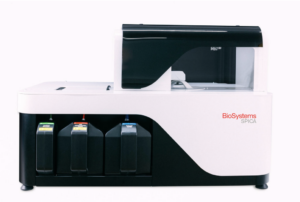Sipping on Science: What Acid, Where?
Let’s revisit a tasting of crisp Sauvignon Blanc and buttery Chardonnay. Both of these white wines have relatively the same pH (acidity), so why do does the Sauvignon Blanc taste so much more crisp and acidic than the creamy Chardonnay? In a simple answer: it all comes down to the type of acids in the wine and the amount present in the wine you are drinking.
Tartaric acid
Tartaric acid is the primary acid naturally found in all grapes, serving as a defense mechanism for the fruit against predation. Because it is the primary acid, this acid controls the overall pH value or overall acidity of the wine. Too little acid and the wine tastes flabby and unimpressive. Too much acid and you’ll be tastings something similar to sour gummy worms. Tartaric acid also adds to the overall stability and color of the wine.
Winemaking fun fact: hot climate areas such as Texas are often known for producing grapes with too little acid. To ensure that the wine stays stable and crisp, winemakers typically add a minimal amount of tartaric acid to help balance the finished product.
Citric acid
Citric acid makes up a small portion of wine, but this acid is worth mentioning because it is found in all organisms, including you! Citric acid is used in metabolomic pathways and allows all organisms to properly function. Although this acid is definitely natural, it is not an acid that is encouraged in winemaking because the universality can help unwanted organisms survive and grow.
Malic acid
This is where we get to the fun part. Malic acid is also found in all grapes and is known for crisp, green flavors (think red delicious apple). For some wines, such as our Sauvignon Blanc, Grenache Blanc, and Rosés, this acid is very desirable. However, for buttery Chardonnays or red wines, we don’t want to think of a summer apple when sipping, so how do we eliminate malic acid from these wines?
Lactic acid
In order to get rid of the zesty flavors in our buttery Chardonnay, we convert the malic acid to lactic acid in a process called Malolactic Fermentation. Oenococcus oeni is the bacteria responsible for this delicious change. Lactic acid is known for creamy flavors (think milky, velvety flavors). Our Chardonnay and all of our red wines undergo Malolactic fermentation in its entirety to create those smooth, buttery textures on your mid-palate.

Lab Work
It is important to track fermentations, and malolactic fermentation is no exception. To test if this fermentation is complete, we use a spectrophotometer to test the wine enzymatically. Let’s break those words down:
Spectrophotometer is an instrument that shoots light through a sample and takes a measurement of the amount of light received on the other side. Every chemical compound absorbs or transmits light; therefore, in measuring the light, we can determine the amount of compound in the sample.

Pictured above: SPICA, our in-house Spectrophotometer.
Enzymatically: In basic terms, we add enzymes (proteins that help to speed up a reaction) to catalyze (start) a reaction. We measure the before and after product on the spectrophotometer to determine how much malic acid is left in the wine.
We consider our wine to be “malic dry” or have no malic acid remaining in the wine when the level is below 0.1 g/L.
Cool, so how does this affect me?
Preferential acid levels are completely palate driven. Sometimes you may crave a crisp Cabernet Franc Rosé to sip by the pool; before purchasing, ask if the rosé has gone through malolactic fermentation. Without even tasting the wine, this key information should give you an indication if this bottle will be your summer time pool sipper.
Next Time on Sipping on Science
Now that we’ve learned about acidity in wine, let’s dive into another important component: sugar. How much sugar is really in wine? How do we test for that?

